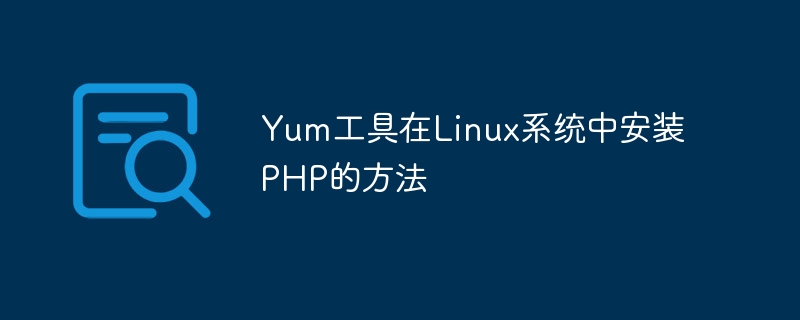

Yum tool method to install PHP in Linux system
In Linux system, Yum is a powerful package management tool that can help users quickly install and manage software Bag. For users who need to install PHP, the Yum tool can be used to install it more conveniently and quickly. The following will introduce the specific steps and code examples for using the Yum tool to install PHP on a Linux system.
Step one: Update Yum source
Before starting to install PHP, you first need to update the Yum source to ensure that the latest software package information is obtained. Open the terminal and enter the following command:
sudo yum update
This will update the package list in the Yum repository to ensure that the packages in the system are up to date.
Step 2: Install PHP
Next, use the Yum tool to install PHP. Enter the following command in the terminal:
sudo yum install php
This will automatically install PHP and its related extensions and dependency packages. Enter Y as prompted to confirm installation.
Step 3: Verify PHP installation
After the installation is completed, you can verify whether PHP is successfully installed by running the following command:
php -v
If successful After installation, the PHP version information will be displayed, indicating that PHP has been installed successfully.
Step 4: Install other PHP extensions
In addition to the basic PHP installation, you may also need to install some PHP extensions to meet specific needs. For example, if you need to install a MySQL extension, you can use the following command:
sudo yum install php-mysql
or install other extensions, such as gd, mbstring, etc. You can use similar commands according to your needs. Install.
Summary:
Using the Yum tool to install PHP in a Linux system is a convenient and efficient method. With simple steps such as updating the Yum source, installing PHP, and verifying the installation, users can quickly deploy a PHP environment and develop. At the same time, the Yum tool can also easily manage PHP extensions and dependency packages, helping users to better carry out development work.
We hope that the methods and code examples introduced above can help users who need to install PHP in Linux systems, allowing them to build a PHP development environment more easily.
The above is the detailed content of How to install PHP in Linux system using Yum tool. For more information, please follow other related articles on the PHP Chinese website!